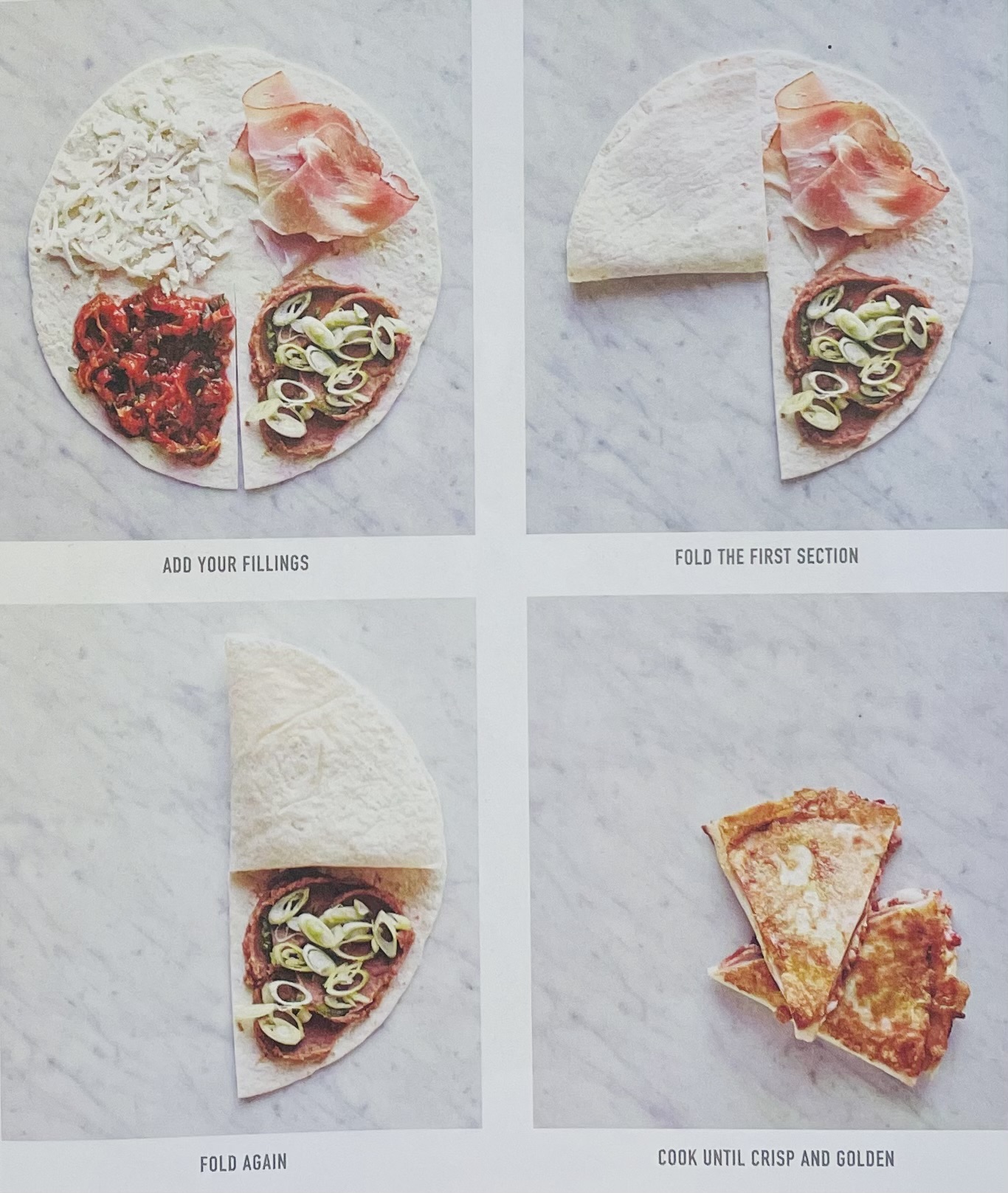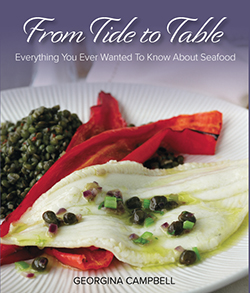THE DARINA ALLEN COLUMN - Ireland's Free School Meals - Fit For Purpose?
Famed for her passion for naturally nutritious food, who better than Darina Allen to weigh up the pros and cons of our free school meals…? And the verdict is not good.
 Concern continues to gather momentum about the Irish National Free School Meals programme, which was welcomed with enthusiasm at first. After all, what's not to like about this progressive initiative, universal hot school meals for our Primary School children. Free for all, no stigma, no worries about school lunches.
Concern continues to gather momentum about the Irish National Free School Meals programme, which was welcomed with enthusiasm at first. After all, what's not to like about this progressive initiative, universal hot school meals for our Primary School children. Free for all, no stigma, no worries about school lunches.
Initially, the children were super excited, but for many enthusiasm soon waned and from my research, a growing number no longer enjoy or eat the food. Many meals come home, half-eaten or untouched in school satchels. Teachers and parents are understandably concerned about the quality, the food waste and the single-use packaging, much of which is not recyclable.
But my primary concern, among many, is the nutritional quality of the food. Much is ultra-processed, which includes flavourings, artificial colourings, stabilisers.... How much more research do we need to convince us of the negative impacts of these additives and processing aids on our health?
I have recently returned from a few weeks in India, where government schools have had a free, Midday Meal programme since 1995. I visited several schools in Rajasthan and Madhya Pradesh where local women were cooking a midday meal of dahl and rice and chapatis from scratch for the children which they happily shared with me. One was a small village school, others had over 200 pupils. An inexpensive, but deeply nourishing meal, the children loved it and were visibly healthy with beautiful skin and teeth.
Once again at the Ahilya Fort School in Maheshwar in Madhya Pradesh, several hundred children, eagerly tucked into a simple meal of ancestral food which their teachers also shared, a chickpea dahl with nutrient dense drumstick greens and freshly cooked flatbread. The children sit cross-legged on mats on the ground. They also bring in a little tiffin-box and a water bottle, no fizz or pop. I noticed one lunch-box with crispy, deep-fried okra, none had UPS/ultra-processed food. Not only were the children well fed, but the ingredients were sourced from local farmers with full traceability, the money goes back directly into the surrounding community and also creates local employment.
Back here in Ireland, I spoke to many parents and teachers. All of whom were positive initially but are now deeply concerned about many aspects of the programme. However, it has to be said that one parent whose children are attending St Luke's School in Glanmire, Cork City said she found it brilliant and that her children loved the food. Another parent whose children attend a different school, pulled no punches and her response was 'it's s***e, a disgrace'.
While it is obvious that there is considerable variation between schools depending on the food provider and the facilities, the greatest concern must be the nutritional value of the food. It's absolutely vital that we feed our children wholesome, good healthy food, not UPF. Study after study has shown that the quality of the food impacts positively or negatively on behaviour, attendance, academic achievement and overall health. The scheme is estimated to cost in the region of €300 million when rolled out across the country. Surely this is not the best use of the tax-payers money. Many feel that the model urgently needs to be re-evaluated and go back to the drawing board. Is €3.20 per child a realistic amount to provide real health giving food. We must not confuse feeding with nourishing...
I do not underestimate the challenge for the Department of Social Protection, but change is undoubtedly necessary. At present we are missing many opportunities, not just to nourish but to further educate our children and to give good example.
• Use the budget to commission and source chemical-free produce from local farmers, poultry producers, and artisans at a fair price and provide complete traceability of ingredients. And practice what we preach about recycling and single use plastic.
• Provide real food, not USP/ultra-processed food and artificial additives which many of the meals seem to include thus far.
• Educate our children on where our food comes from, seasonal food, the importance of sourcing....
• Emphasise that food should be our medicine and not create potential health and obesity problems.
At present 1 in 5 children here in Ireland are overweight or obese. Diabetes, initially a disease of older-people, is now manifesting in young children. We're sleepwalking into a health crisis of monumental proportions.
There is no need to reinvent the wheel, look at Alice Waters Edible Schoolyard Project in Berkeley, California and the MAD model in Copenhagen where over 70% of food served in schools, hospitals and prisons must be organically produced. The initiative has already delivered remarkable outcomes and benefited the public purse Japan's national school lunch programme, where the government prioritises children's health, is another example of good practice.
After all, the wealth of a nation depends on the health of the nation and the health of the nation depends to a great extent on the food we eat.
UPDATE April 2025: A government announcement has indicated that the total number of schools with access to Hot School Meals will rise to nearly 2,850 from 11 April 2025. The 713 new Primary Schools approved expressed an interest in Hot School Meals last year. Other remaining Primary Schools will be eligible from September 2025. An expansion of the plan is also expected, and a revision of Nutritional Standards.
Here are a couple of tasty recipe suggestions that could be the inspiration for wholesome and nutritional school meals...
%20CROPPED%20.jpg) Mermaid's Fish Pie
Mermaid's Fish Pie
This easy-peasy recipe can be used for almost any round fish, including cod, pollock, ling, haddock, salmon or grey mullet. I like to prepare a big batch to make several pies, which can be refrigerated or frozen and reheated another day. A chopped hard-boiled egg and 110g cooked peas add extra nourishment and flavour. Try crispy Cheddar crumbs or croutons for toppings to ring the changes. Serves 6-8
1.1kg cod, hake, haddock or grey mullet fillets, or a mixture
15g butter, for greasing
600ml whole milk
approx. 20g roux (made by blending 10g softened butter with 10g plain flour and cook on a low heat for 2 minutes, stirring occasionally)
¼ tsp Dijon mustard
150-175g grated Gruyère or Cheddar cheese or 75g grated Parmesan cheese
2 tbsp chopped flat-leaf parsley
110g cooked mussels, shelled – keep a few in the shell for garnish
110g cooked prawns - keep a few in the shell for garnish
½ can of chopped anchovies, approx. 4 fillets (optional)
4 sheets of filo pastry (optional – see below)
melted butter, for brushing
flaky sea salt and freshly ground black pepper
For the Mashed Potato (optional)
900g unpeeled potatoes, preferably Golden Wonders or Kerr's Pinks, scrubbed well
300ml whole milk
1-2 organic, free-range egg yolks or 1 whole egg and 1 egg yolk
25-50g butter
First prepare the mashed potato topping, if using. Put the potatoes into a saucepan of cold water, add a good pinch of salt and bring to the boil. When the potatoes are about half cooked after about 15 minutes, strain off two-thirds of the water, replace the lid on the saucepan, put over a gentle heat and steam for 5-6 minutes until cooked. Peel immediately by pulling off the skins, put the potatoes into the bowl of a food mixer and beat or mash by hand.
Bring the milk to the boil. Beat the eggs into the hot mashed potatoes and add enough boiling creamy milk to mix to a soft, light consistency, then beat in the butter, the amount depending on how rich you like your potatoes. Season to taste with salt and pepper.
Preheat the oven to 180°C/Gas Mark 4.
Skin the fish and cut into 6–8 portions. Season well with salt and pepper. Lay the pieces of fish in a lightly buttered 26cm sauté pan and cover with the milk. Bring to the boil, then simmer for 4-5 minutes until the fish has changed from translucent to opaque. Remove the fish to a plate with a slotted spoon.
Bring the milk back to the boil and whisk in enough roux to thicken the sauce to a light coating consistency. Stir in the mustard, cheese and parsley. Season to taste. Add the cooked fish, most of the mussels and prawns and the anchovies, if using, and stir gently to coat with the sauce. Transfer carefully to a serving dish or dishes. Spoon or pipe a layer of mashed potato on top of each one and tuck the reserved prawns and mussels into the potato topping.
For the alternative filo topping, brush each filo sheet with melted butter and cut into four pieces. Scrunch up each piece of filo pastry and arrange side by side on top of the pie(s).
Bake (either topping) for 15-20 minutes until bubbling and the potato is browned or the filo is crisp and crunchy.
 Quesadilla Foldies
Quesadilla Foldies
These foldies are a hybrid of tacos and quesadillas. Choose three complementary fillings from the suggestions below, plus a chilli sauce. These can be vegetarian or add some sliced meat as well as the melty cheese, if you like.
Serves 1
1 organic, free-range egg
1 wheat tortilla per person
a handful of mixed grated mozzarella,
Gruyére or Parmesan cheese
olive oil, for frying
flaky sea salt and freshly ground black pepper
Suggested Fillings
• tomato fondue with Chilli & Coriander
• piperonata
• spiced aubergines
• refried beans
• sautéed herby mushrooms
• hot chilli or sweet chilli sauce of your choice
• thin slices of salami, prosciutto, serrano,
• cooked ham
Guacamole (optional accompaniment, see method below)
1 ripe avocado (Hass if available)
1-2 tbsp freshly squeezed lime juice
1 tbsp olive oil
1 tbsp freshly chopped coriander or
flat-leaf parsley
Tomato and Coriander Salsa (optional accompaniment, see method below)
4 very ripe tomatoes, chopped
1 tbsp red or white onion, chopped
1 garlic clove, crushed
1/2 - 1 jalapeño or serrano chilli, deseeded and finely chopped
1-2 tablespoons chopped coriander
a squeeze of fresh lime juice
sugar
Heat a cast-iron pan over a low-medium heat.
Whisk the egg and pour on to a plate. Season with salt and pepper. Lay a tortilla on top of the beaten egg and cut from 6 o'clock into the centre. Spread a layer of your chosen filling in a triangle between 9 and 12 o'clock. Fold the 6-9 triangle over the filling. Spread a little hot sauce on top. Spread another layer of filling between 12 and 3. Fold over again allowing a little folding space between that and the next triangle. Finally, a layer of mixed grated cheese between 3–6. Fold the tortilla over to make a triangle. Press gently.
Add a little olive oil to the pan. Lift the fan-shaped foldie into the hot pan. Cook for 3 minutes on one side, flip over carefully and cook on the other side until crisp and golden and the cheese is melting. Transfer carefully on to a piece of parchment paper on a plate
To make the guacamole, scoop out the ripe flesh from the avocado and mash with a fork or in a pestle and mortar. Add the lime juice, olive oil, chopped coriander, salt and pepper to taste. Cover and keep cool until needed. (A little finely diced chilli or tomato may also be added to the guacamole, if you wish.)
To make the salsa, mix all the ingredients together. Season with flaky sea salt, pepper and sugar.
Enjoy the foldies with a dollop of guacamole, salsa or whatever you fancy.






There are currently no comments
Leave a comment
Not a member? Register for your free membership now!
Or leave a comment by logging in with: